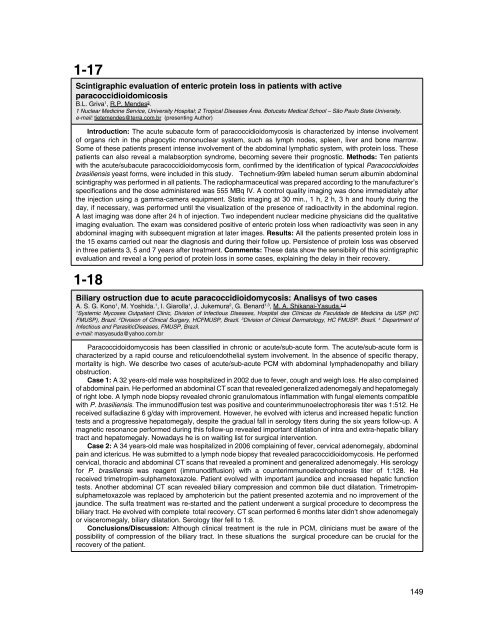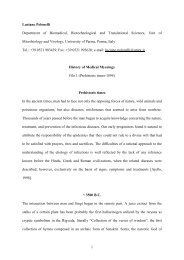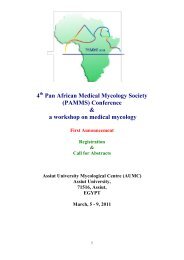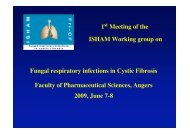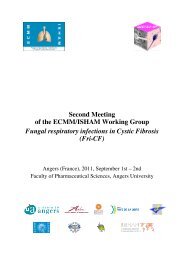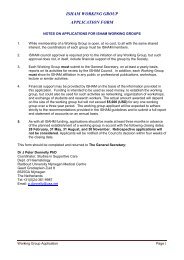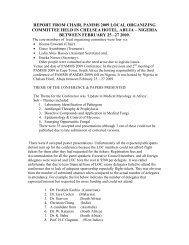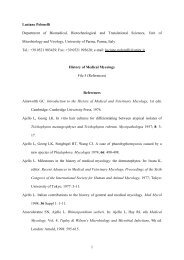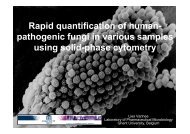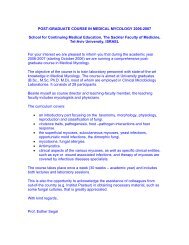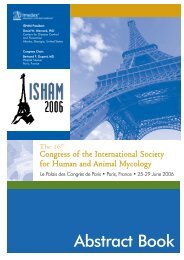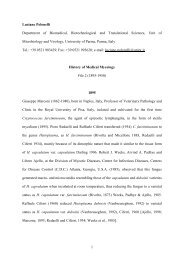1-15Adrenal insufficiency by paracoccidioidomicosys (PCM) - series of casesC.S.O. Bredt 1 ; G.L.Bredt Jr 1 ; P.A.D.Duarte 1 ; F. Pedott 2 ; T. Pereira 2 ; L. De Campos 2 . Myiamoto 2 ; A.A.Ribeiro 2 ; E.Soliva Jr 2 ; L.C.Volpolini 21 Medicine Associated Professor. Universidade Estadual do Oeste do Paraná-Cascavel-PR-Brazil, 2 Medicine Students- UniversidadeEstadual do Oeste do Paraná- Paraná -Cascavel - Brazil. email: csakuma21@yahoo.com.brBackground: In endemic areas, PCM is the most frequent etiology of Addison’s disease. Paracoccidioides brasiliensis,the causative agent of PCM, exhibits high tropism will be the adrenal glands, which results in low hormone reserves and inmore severe cases, in symptoms of primary adrenal insufficiency. Adrenal insufficiency in symptomatic you marry is describedin 10-15%. Methods: report cases of three patients with adrenal insufficiency caused by PCM. Results: 1 st case: a 75-years-old-woman, with fever, malaise, anorexia 10-kg weight lost. She was presented with hypothension and dehydrated.Clinical examination disclosed abdominal masses in bilateral renal topography. CT scan of abdome demonstrated solidinjuries in the adrenal glands. Biopsy disclosed abscess due PCM. She was submitted to a bilateral adrenalectomia.The patient was placed on antifungal therapy with B anfothericin and glucocorticoid replacement and made an excellentsymptomatic recovery. 2 nd case: a 43-years-old male had a 2-years history of progressive darkening of the skin and a 20-kg weight loss, in addition to lethargy, anorexia, nausea and hypothension. X-ray of thorax demosntrated hilar infiltratedbilateral. Sorologia for PCM 1:8 (IDD) and plasma cortisol levels was determined by radioimmunoassay of baseline bloodsamples 1,3 ug/dL. Initiate treatment with Itraconazol and prednisona with important improvement. 3 rd case: a 47-yerasold-woman, presented weakness, cutaneous darkening and 12-kg weigth lost in 1 year beyond complaint of intense avidezfor salt. She looked attendance with persistent and dispnéia cough. X-ray of thorax presented multiple bilateral areas andthe lung biopsy disclosed PCM. Plasma cortisol levels was 1,72 ug/dL and 89,2 ACTH of pg/mL. Initiate treatment withitraconazol and prednisona with good evolution. In all the cases described above there were significant improvement of thesymptoms and the quality of life. Conclusions: The authors conclude that an early detection of hipoadrenalism in patientsliving in the endemic areas is necessary and very important to minimize further adrenal damage and consequently permitsto shorter hormonal treatment in these patients.1-16Adrenal insuficiency associated to paracoccidioidomycosis: Report of three autopsy casesMantilla J.C. 1 , and Serrano A. 21 Hospital Universitario de Santander, HUS, Bucaramanga – Colombia. 2Universidad Industrial de Santander, UIS, Bucaramanga –Colombia. e-mail: eterna888@hotmail.comParacoccidioidomycosis or South American Blastomycosis is an endemic fungal infection prevalente in LatinAmerica, which is caused by a dimorphic fungus, Paracoccidioides brasiliensis. This systemic infection, primarilyinvolves lungs, from where it spreads via lymphatic or blood to other organs such as the skin, mucous membranes,lymph nodes, central nervous system and adrenal glands, among others. Objective: Describe the main pathologicfindings in three older adults with chronic progressive disease, who died at Hospital Universitario de Santander (HUS),and who were diagnosed with paracoccidioidomycosis boy medical-scientific autopsy, performed in the Departmentof Pathology, Medical School of Universidad Industrial de Santander (UIS). Materials and methods: It is presentedthe clinical-pathological report or three autopsies performed in the Department or Pathology or UIS, Bucaramanga,Colombia, during the years 2005 and 2006. Results: case: The first of these relates to a patient of 52 years of age, malegender, with clinical symptoms of a month of evolution characterized by progressive loss of weight, chills, diaphoresis,appearance of vesicles in the oral cavity, accompanied by bleeding, odynophagia, cough with white expectoration andpints of blood and progressive dysphagia, who died as a result of multiple organic failure. The second, is a patient of 53years of age, male gender, with clinical symptoms of is months of evolution characterized by occurrence of mass in theleft eye of progressive growing, who died due to a complex hydroelectrolitic imbalance characterized by dehydrationunwieldy and sustained hyperkalemia. The third case is about a man of 59 years of age, male gender, consulting porclinicals symptoms of three months of evolution represented by aletered state of consciousness with subsequent inabilityto walk, loss of sphincters control and hydroelectrolitic imbalance with hiperkalemia and dehydration unwieldy, whichwill eventually produce death. Findings of necropsy: The first case shows corpse of an elderly, male gender, withcervical, thoracic, abdominal and groin lymphadenopathy and multiple white-grayish nodules of firm consistency andappearance fibrotic in soft tissue of the thorax, pleura, lungs, pericardium, kidneys, adrenal glands and right testicle. Themicroscopic study shows inflammatory lesion characterized by multiple granulomas with abundant multinucleated giantcells type langhans, in which cytoplasm are rounded birrefringent structures with multiple budding, which correspond toParacoccidioides brasiliensis. The second patient was an elderly, male, with small curvature of the stomach and aroundthe pancreas, fibrous adhesions in left hemithorax and yellowish-white nodules in lungs and adrenal glands, whichsere observed increased of size, histopathological examination revealed chronic inflammatory process with countlessgranulomas with multinucleated giant cells type Langhans and fungal structures of Paracoccidioides brasiliensis inits cytoplasm. The third case refers to an elderly, male gender, with findings of cervical lymphadenopathy and whitegrayishnodules of firm consistency and various sizes in meninges, lungs, liver and adrenal glands, microscopicexamination revealed a chronic granulomatous inflammatory lesion widely distributed in those organs, with multiplebudding yeast of Paracoccidioides brasiliensis inside the giant cell type Langhans. Conclusion: Three autopsy casesof patients who died at HUS as a result of widespread infection by Paracoccidioides brasiliensis are presented. Thedeep hydroelectrolitic imbalance due to an adrenal insufficiency secondary to granulomatous diffuse infiltration was thedirect cause of death in these cases.148
1-17Scintigraphic evaluation of enteric protein loss in patients with activeparacoccidioidomicosisB.L. Griva 1 , R.P. Mendes 2 .1 Nuclear Medicine Service, University Hospital; 2 Tropical Diseases Área. Botucatu Medical School – São Paulo State University.e-mail: tietemendes@terra.com.br (presenting Author)Introduction: The acute subacute form of paracoccidioidomycosis is characterized by intense involvementof organs rich in the phagocytic mononuclear system, such as lymph nodes, spleen, liver and bone marrow.Some of these patients present intense involvement of the abdominal lymphatic system, with protein loss. Thesepatients can also reveal a malabsorption syndrome, becoming severe their prognostic. Methods: Ten patientswith the acute/subacute paracoccidioidomycosis form, confirmed by the identification of typical Paracoccidioidesbrasiliensis yeast forms, were included in this study. Technetium-99m labeled human serum albumin abdominalscintigraphy was performed in all patients. The radiopharmaceutical was prepared according to the manufacturer’sspecifications and the dose administered was 555 MBq IV. A control quality imaging was done immediately afterthe injection using a gamma-camera equipment. Static imaging at 30 min., 1 h, 2 h, 3 h and hourly during theday, if necessary, was performed until the visualization of the presence of radioactivity in the abdominal region.A last imaging was done after 24 h of injection. Two independent nuclear medicine physicians did the qualitativeimaging evaluation. The exam was considered positive of enteric protein loss when radioactivity was seen in anyabdominal imaging with subsequent migration at later images. Results: All the patients presented protein loss inthe 15 exams carried out near the diagnosis and during their follow up. Persistence of protein loss was observedin three patients 3, 5 and 7 years after treatment. Comments: These data show the sensibility of this scintigraphicevaluation and reveal a long period of protein loss in some cases, explaining the delay in their recovery.1-18Biliary ostruction due to acute paracoccidioidomycosis: Analisys of two casesA. S. G. Kono 1 , M. Yoshida. 1 , I. Giarolla 1 , J. Jukemura 2 , G. Benard 1,3 , M. A. Shikanai-Yasuda. 1,41Systemic Mycoses Outpatient Clinic, Division of Infectious Diseases, Hospital das Clínicas da Faculdade de Medicina da USP (HCFMUSP), Brazil. 2 Division of Clinical Surgery, HCFMUSP, Brazil. 3 Division of Clinical Dermatology, HC FMUSP. Brazil. 4 Department ofInfectious and ParasiticDiseases, FMUSP, Brazil.e-mail: masyasuda@yahoo.com.brParacoccidoidomycosis has been classified in chronic or acute/sub-acute form. The acute/sub-acute form ischaracterized by a rapid course and reticuloendothelial system involvement. In the absence of specific therapy,mortality is high. We describe two cases of acute/sub-acute PCM with abdominal lymphadenopathy and biliaryobstruction.Case 1: A 32 years-old male was hospitalized in 2002 due to fever, cough and weigh loss. He also complainedof abdominal pain. He performed an abdominal CT scan that revealed generalized adenomegaly and hepatomegalyof right lobe. A lymph node biopsy revealed chronic granulomatous inflammation with fungal elements compatiblewith P. brasiliensis. The immunodiffusion test was positive and counterimmunoelectrophoresis titer was 1:512. Hereceived sulfadiazine 6 g/day with improvement. However, he evolved with icterus and increased hepatic functiontests and a progressive hepatomegaly, despite the gradual fall in serology titers during the six years follow-up. Amagnetic resonance performed during this follow-up revealed important dilatation of intra and extra-hepatic biliarytract and hepatomegaly. Nowadays he is on waiting list for surgical intervention.Case 2: A 34 years-old male was hospitalized in 2006 complaining of fever, cervical adenomegaly, abdominalpain and ictericus. He was submitted to a lymph node biopsy that revealed paracoccidioidomycosis. He performedcervical, thoracic and abdominal CT scans that revealed a prominent and generalized adenomegaly. His serologyfor P. brasiliensis was reagent (immunodiffusion) with a counterimmunoelectrophoresis titer of 1:128. Hereceived trimetropim-sulphametoxazole. Patient evolved with important jaundice and increased hepatic functiontests. Another abdominal CT scan revealed biliary compression and common bile duct dilatation. Trimetropimsulphametoxazolewas replaced by amphotericin but the patient presented azotemia and no improvement of thejaundice. The sulfa treatment was re-started and the patient underwent a surgical procedure to decompress thebiliary tract. He evolved with complete total recovery. CT scan performed 6 months later didn’t show adenomegalyor visceromegaly, biliary dilatation. Serology titer fell to 1:8.Conclusions/Discussion: Although clinical treatment is the rule in PCM, clinicians must be aware of thepossibility of compression of the biliary tract. In these situations the surgical procedure can be crucial for therecovery of the patient.149


